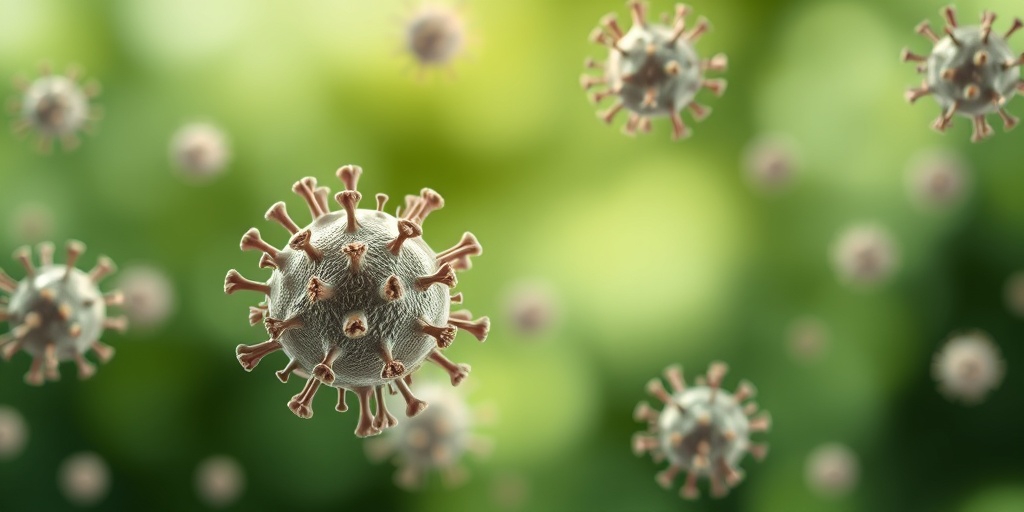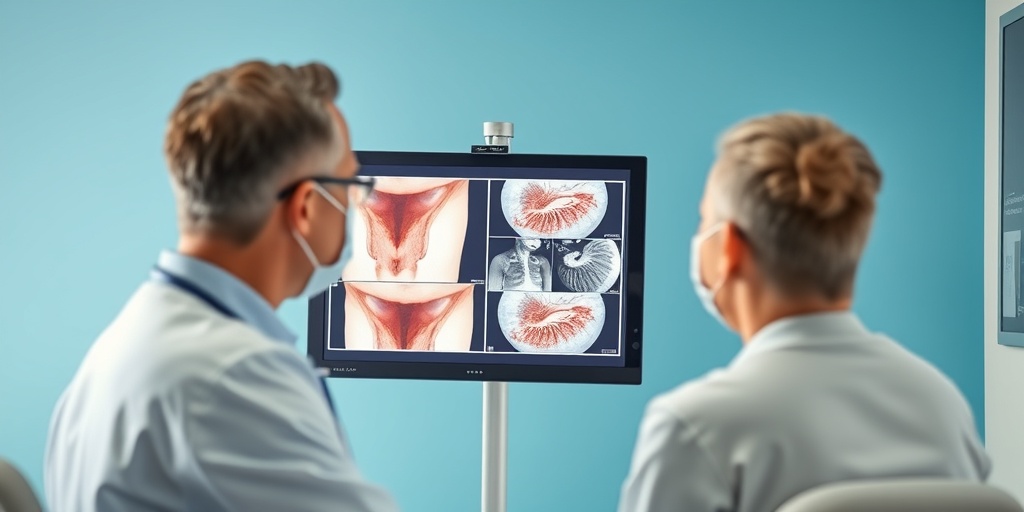What Is HPV?
Human Papillomavirus (HPV) is a group of more than 200 related viruses, some of which can lead to health issues such as genital warts and various types of cancer. Among these, certain strains are classified as high-risk, meaning they have the potential to cause cancer, while others are considered low-risk and are primarily associated with the development of genital warts.
Understanding HPV Transmission
HPV is primarily transmitted through intimate skin-to-skin contact, making it one of the most common sexually transmitted infections (STIs) worldwide. This includes vaginal, anal, and oral sex. It’s important to note that HPV can be spread even when an infected person shows no signs or symptoms, which is why regular screenings and vaccinations are crucial.
Symptoms of HPV
Most people with HPV do not experience any symptoms and may not even know they are infected. However, when symptoms do occur, they can manifest as:
- Genital warts: Small, flesh-colored or gray growths that can appear on the genital area, anus, or mouth.
- Changes in cervical cells: Detected through Pap smears, which can indicate the presence of high-risk HPV strains.
- Cancers: Certain strains of HPV are linked to cervical, anal, and oropharyngeal cancers.
HPV Vaccination
The HPV vaccine is a safe and effective way to protect against the most common and high-risk strains of the virus. It is recommended for preteens, but can be given up to age 45. Vaccination can significantly reduce the risk of developing HPV-related health issues, including genital warts and cancers.
Genital Warts Overview
Genital warts are a common manifestation of HPV infection, particularly caused by low-risk strains such as HPV 6 and HPV 11. These warts can appear as small bumps or groups of bumps in the genital area, and while they are not usually harmful, they can be uncomfortable and may cause emotional distress.
Identifying Genital Warts
Genital warts can vary in appearance and may be:
- Flat or raised: They can be smooth or have a cauliflower-like texture.
- Single or multiple: They may appear as a single wart or in clusters.
- Color: They can be flesh-colored, gray, or darker in color.
Treatment Options for Genital Warts
If you suspect you have genital warts, it’s essential to consult a healthcare provider for an accurate diagnosis and treatment plan. Treatment options may include:
- Topical medications: Prescription creams or solutions that can be applied directly to the warts.
- Cryotherapy: Freezing the warts with liquid nitrogen.
- Electrosurgery: Using electrical currents to remove warts.
- Surgical removal: In some cases, warts may need to be surgically excised.
Living with Genital Warts
While genital warts can be distressing, it’s important to remember that they are manageable. Open communication with partners and healthcare providers can help in navigating the emotional and physical aspects of living with HPV and genital warts. Additionally, resources like Yesil Health AI (yesilhealth.com) can provide evidence-based answers to your health questions, helping you make informed decisions about your care.
In conclusion, understanding HPV and its implications, including genital warts, is crucial for maintaining sexual health. Regular screenings, vaccinations, and open discussions with healthcare professionals can significantly reduce the risks associated with this common virus. 🌟

HPV Symptoms
Human Papillomavirus (HPV) is a common sexually transmitted infection that can lead to various health issues, including genital warts. Understanding the symptoms of HPV is crucial for early detection and treatment. While many people with HPV may not experience any symptoms, some may notice signs that warrant attention.
Common Symptoms of HPV
When it comes to HPV genital warts, the symptoms can vary significantly from person to person. Here are some of the most common symptoms associated with HPV:
- Genital Warts: These are small, flesh-colored or gray growths that can appear on the genital area, including the vulva, vagina, cervix, penis, scrotum, and anus. They may be raised or flat, single or multiple, and can sometimes resemble cauliflower.
- Itching or Discomfort: Some individuals may experience itching or discomfort in the genital area, which can be a sign of genital warts.
- Bleeding: If warts are present, they may bleed during sexual intercourse or when wiping after using the bathroom.
- Changes in Skin Color: The skin around the genital area may change color or texture due to the presence of warts.
Symptoms in Women
For women, HPV can lead to additional complications, including:
- Cervical Changes: Certain strains of HPV can cause changes in cervical cells, which may lead to cervical cancer if left untreated. Regular Pap smears are essential for early detection.
- Vaginal Discharge: Unusual vaginal discharge may occur, especially if there are underlying infections related to HPV.
Symptoms in Men
Men may also experience symptoms related to HPV, including:
- Penile Warts: Similar to women, men can develop warts on the penis, scrotum, or around the anus.
- Anal Warts: HPV can cause warts in the anal region, which may lead to discomfort or bleeding.
It’s important to note that many individuals with HPV do not show any symptoms at all. Regular check-ups and open communication with healthcare providers are vital for managing health and addressing any concerns related to HPV genital warts.
Causes of Genital Warts
Understanding the causes of genital warts is essential for prevention and management. Genital warts are primarily caused by specific strains of the HPV virus, particularly types 6 and 11, which are considered low-risk for cancer but can lead to the development of warts.
Transmission of HPV
HPV is highly contagious and can be transmitted through:
- Skin-to-Skin Contact: The virus spreads through direct skin-to-skin contact during sexual activity, including vaginal, anal, and oral sex.
- Non-Sexual Contact: Although less common, HPV can also be transmitted through non-sexual means, such as sharing towels or personal items with an infected person.
Risk Factors for Developing Genital Warts
Several factors can increase the likelihood of developing genital warts:
- Multiple Sexual Partners: Having multiple sexual partners increases the risk of exposure to HPV.
- Weakened Immune System: Individuals with compromised immune systems, such as those with HIV/AIDS or those taking immunosuppressive medications, are at a higher risk.
- Young Age: Young adults and teenagers are more susceptible to HPV due to a lack of immunity and higher rates of sexual activity.
Preventing HPV and Genital Warts
While there is no cure for HPV, there are effective ways to reduce the risk of infection and the development of genital warts:
- Vaccination: The HPV vaccine is highly effective in preventing the most common strains of the virus that cause genital warts and cervical cancer. It is recommended for preteens and young adults.
- Safe Sex Practices: Using condoms and dental dams can significantly reduce the risk of HPV transmission, although they do not provide complete protection.
- Regular Health Check-ups: Routine screenings and open discussions with healthcare providers can help in early detection and management of HPV-related issues.
By understanding the symptoms and causes of HPV/genital warts, individuals can take proactive steps towards prevention and treatment, ensuring better sexual health and overall well-being. 🌟

Risk Factors for HPV
Human Papillomavirus (HPV) is a common sexually transmitted infection that can lead to various health issues, including genital warts and certain types of cancer. Understanding the risk factors for HPV is crucial for prevention and early detection. Here are some key factors that can increase your risk of contracting HPV:
1. Sexual Activity
Engaging in sexual activity at a young age can increase your risk of HPV. The earlier you start having sex, the more likely you are to be exposed to the virus. Additionally, having multiple sexual partners raises the chances of encountering someone who has HPV.
2. Weakened Immune System
A compromised immune system can make it harder for your body to fight off infections, including HPV. Conditions such as HIV/AIDS, or medications that suppress the immune system (like chemotherapy), can increase your susceptibility to HPV and its complications.
3. Lack of Vaccination
The HPV vaccine is highly effective in preventing the most common strains of the virus that cause genital warts and cancer. Not getting vaccinated, especially before becoming sexually active, significantly increases your risk of HPV infection.
4. Smoking
Smoking has been linked to a higher risk of HPV-related diseases. It can weaken your immune response and make it more difficult for your body to clear the virus. If you smoke, consider quitting to reduce your risk of HPV and other health issues.
5. Other Sexually Transmitted Infections (STIs)
Having other STIs can increase your risk of contracting HPV. STIs can cause inflammation and changes in the genital area, making it easier for HPV to enter the body. Regular STI screenings are essential for sexually active individuals.
6. Gender
While both men and women can contract HPV, certain strains are more likely to cause health issues in women, such as cervical cancer. Women should have regular Pap smears to detect any changes in cervical cells that may indicate HPV infection.
Diagnosis of Genital Warts
Genital warts are one of the most visible symptoms of HPV infection. Diagnosing genital warts is typically straightforward, but it’s essential to consult a healthcare provider for an accurate diagnosis and appropriate treatment. Here’s how the diagnosis process generally works:
1. Physical Examination
Your healthcare provider will begin with a physical examination of the genital area. They will look for characteristic signs of genital warts, which may appear as small, flesh-colored or gray growths. These warts can be flat or raised and may cluster together, resembling a cauliflower.
2. Medical History
During your visit, your doctor will ask about your medical history, including any previous STIs, sexual activity, and symptoms you may be experiencing. This information helps them assess your risk factors and determine the best course of action.
3. Additional Testing
In some cases, your doctor may recommend additional tests to confirm the diagnosis. This could include:
- Pap Smear: For women, a Pap smear can help detect changes in cervical cells caused by HPV.
- Biopsy: If there’s uncertainty about the diagnosis, a small sample of tissue may be taken for laboratory analysis.
- HPV Testing: This test can identify the presence of high-risk HPV strains that may lead to cancer.
4. Importance of Early Diagnosis
Early diagnosis of genital warts is crucial for effective treatment and management. If left untreated, genital warts can lead to complications, including an increased risk of certain cancers. Regular check-ups and open communication with your healthcare provider can help you stay informed and proactive about your sexual health.
Remember, while genital warts can be distressing, they are manageable with the right treatment and care. If you suspect you have genital warts or have been diagnosed with HPV, don’t hesitate to reach out to a healthcare professional for guidance and support. 💖

Treatment Options for Genital Warts
Genital warts, caused by certain strains of the human papillomavirus (HPV), can be a source of discomfort and concern for many individuals. Fortunately, there are several effective treatment options available to help manage and eliminate these warts. Understanding these options can empower you to make informed decisions about your health.
Topical Treatments
Topical treatments are often the first line of defense against genital warts. These medications are applied directly to the warts and can help reduce their size and number. Common topical treatments include:
- Podofilox (Condylox): This is a prescription medication that works by destroying wart tissue. It is typically applied twice a day for three days, followed by a four-day break.
- Imiquimod (Aldara): This cream boosts the immune system’s ability to fight the virus. It is usually applied three times a week for up to 16 weeks.
- Sinecatechins (Veregen): This ointment is derived from green tea and is applied three times daily until the warts are gone.
Procedural Treatments
If topical treatments are ineffective or if the warts are extensive, procedural options may be recommended. These include:
- Cryotherapy: This involves freezing the warts with liquid nitrogen, causing them to fall off over time.
- Electrosurgery: This technique uses electrical currents to burn off the warts.
- Laser therapy: A focused beam of light is used to destroy the wart tissue.
- Excision: In some cases, warts may be surgically removed.
It’s important to consult with a healthcare provider to determine the most suitable treatment option based on the size, location, and number of warts, as well as your overall health.
Managing Symptoms and Recurrence
While treatments can effectively remove genital warts, it’s essential to understand that HPV can remain in the body, potentially leading to recurrence. Here are some tips for managing symptoms and reducing the risk of recurrence:
- Maintain good hygiene: Keeping the genital area clean and dry can help prevent irritation and infection.
- Boost your immune system: A healthy diet, regular exercise, and adequate sleep can strengthen your immune response.
- Regular check-ups: Routine visits to your healthcare provider can help monitor your condition and catch any recurrences early.
Preventing HPV and Genital Warts
Prevention is key when it comes to HPV and genital warts. Understanding how to reduce your risk can help protect your health and the health of your partners.
Vaccination
The HPV vaccine is one of the most effective ways to prevent HPV infection and, consequently, genital warts. The vaccine is recommended for preteens but can be given up to age 45. It protects against the most common strains of HPV that cause genital warts and certain types of cancer.
Safe Sexual Practices
Engaging in safe sexual practices can significantly reduce the risk of HPV transmission. Here are some strategies to consider:
- Use condoms: While condoms do not provide complete protection against HPV, they can reduce the risk of transmission.
- Limit the number of sexual partners: Having fewer partners can decrease your risk of exposure to HPV.
- Communicate with partners: Discussing sexual health openly with partners can help ensure that both parties are informed and can take necessary precautions.
Regular Health Screenings
Regular health screenings, including Pap smears for women, can help detect any changes in cervical cells caused by HPV. Early detection is crucial for effective management and treatment.
By taking proactive steps to prevent HPV and genital warts, you can significantly reduce your risk and promote better sexual health. Remember, knowledge is power, and staying informed is your best defense! 💪

Frequently Asked Questions about HPV/Genital Warts
What are HPV and genital warts?
HPV (Human Papillomavirus) is a group of more than 200 related viruses, some of which can cause genital warts. These warts are small growths that appear on the genital area, and they can be transmitted through sexual contact.
What are the symptoms of genital warts?
The symptoms of genital warts can vary, but they typically include:
- Small, flesh-colored or gray growths in the genital area
- Itching or discomfort in the affected area
- Bleeding during intercourse
It’s important to note that some individuals may not experience any symptoms at all.
How is HPV/genital warts diagnosed?
A healthcare provider can diagnose genital warts through a physical examination. In some cases, a biopsy may be performed to rule out other conditions.
What are the treatment options for genital warts?
Treatment for genital warts may include:
- Topical medications prescribed by a doctor
- Freezing (cryotherapy) to remove warts
- Laser treatment for larger warts
- Surgical removal in some cases
It’s essential to consult a healthcare professional for the best treatment plan.
Can genital warts lead to cancer?
While most strains of HPV that cause genital warts are not associated with cancer, some high-risk strains can lead to cervical and other types of cancer. Regular screenings and vaccinations can help reduce this risk.
Is there a cure for HPV/genital warts?
There is currently no cure for HPV itself, but genital warts can be treated effectively. The body’s immune system often clears the virus over time, but treatment can help manage symptoms and reduce transmission.
How can I prevent HPV/genital warts?
Preventive measures include:
- Getting vaccinated against HPV
- Using condoms during sexual activity
- Limiting the number of sexual partners
These steps can significantly reduce the risk of contracting HPV and developing genital warts.
Are genital warts contagious?
Yes, genital warts are highly contagious and can be transmitted through skin-to-skin contact during sexual activity, even when warts are not visible.
What should I do if I think I have genital warts?
If you suspect you have genital warts, it is crucial to schedule an appointment with a healthcare provider for an accurate diagnosis and appropriate treatment.




